As I covered in my first article, poor running biomechanics, equipment errors and training errors are just some of the factors that can lead the common injury of ‘runner's knee’.
Initial management of runner’s knee includes reducing the load put on your body by modifying or reducing movements that may be aggravating or painful, such as squatting, kneeling or sitting for too long.
Taking anti-inflammatories and icing the knee for up to 20 minutes three or four times a day can also help to reduce pain and swelling.
That said, recovery from an injury isn’t all about rest, however beneficial this may feel!
To strengthen muscles, boost mental health and help reduce the amount of time spent inactive, the following at-home, gentle exercises and stretches can all be performed to help get back on track while unable to run due to runner’s knee.
1. Strengthen your quadriceps with straight leg raises
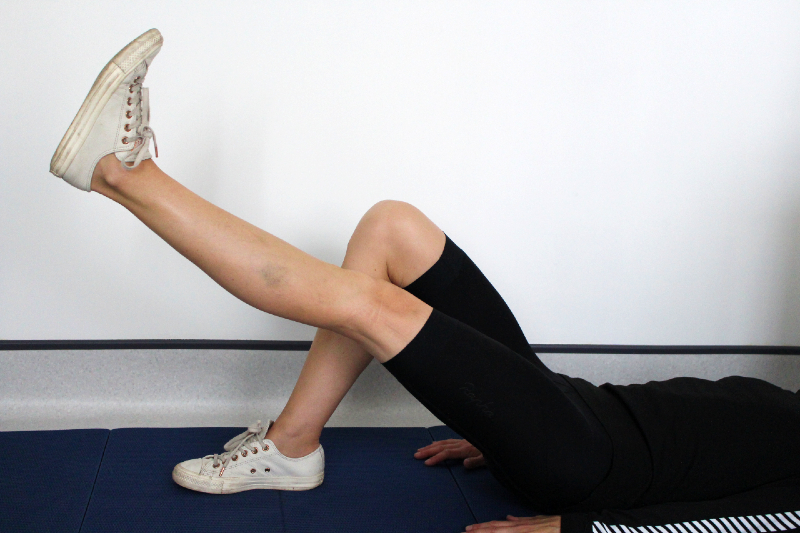
After lying on your back with one leg out straight and one knee bent with your foot on the floor, lock your straight leg’s knee by tightening the muscles in the front of your thigh.
Next, lift the leg up until it is parallel to the other thigh and then lower. Aim for 20 repetitions and two to three sets.
2. Strengthen your glute muscles with side-lying leg lifts and bridge exercises
Side-lying lifts
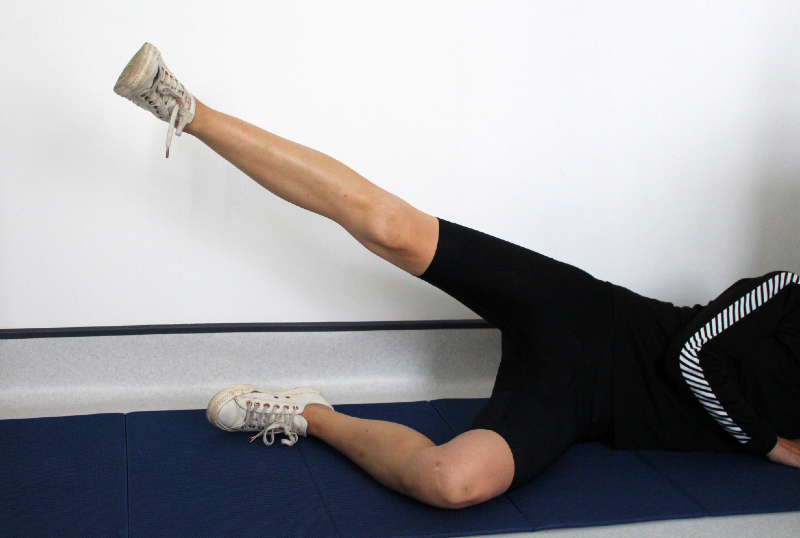
Lying on your side with your top leg out straight, lock your knee by tightening the muscles in the front of your thigh. Lift the leg up as far as you can and then lower. Aim for 20 repetitions and two to three sets.
Double leg bridge
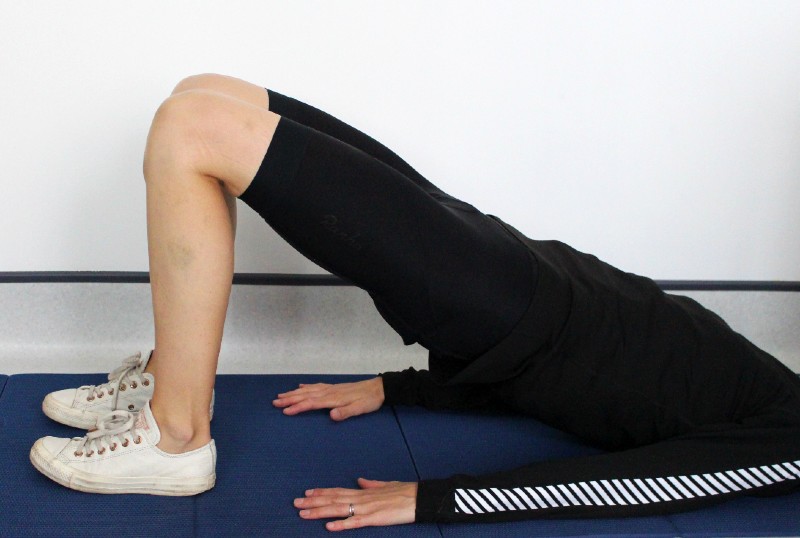
Lying on your back with your knees bent and feet flat on the floor, lift your hips by tightening your buttock muscles. Aim for 20 repetitions and two to three sets.
Marching bridge
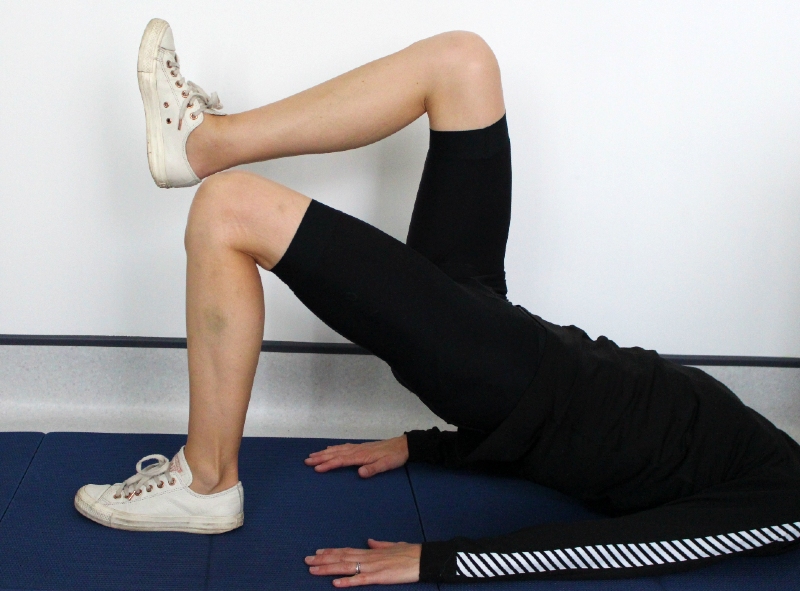
Maintain your bridge position (with your hips lifted) and alternately ‘march’ your leg 10 times each side. Repeat this sequence 10 times.
Single leg bridge
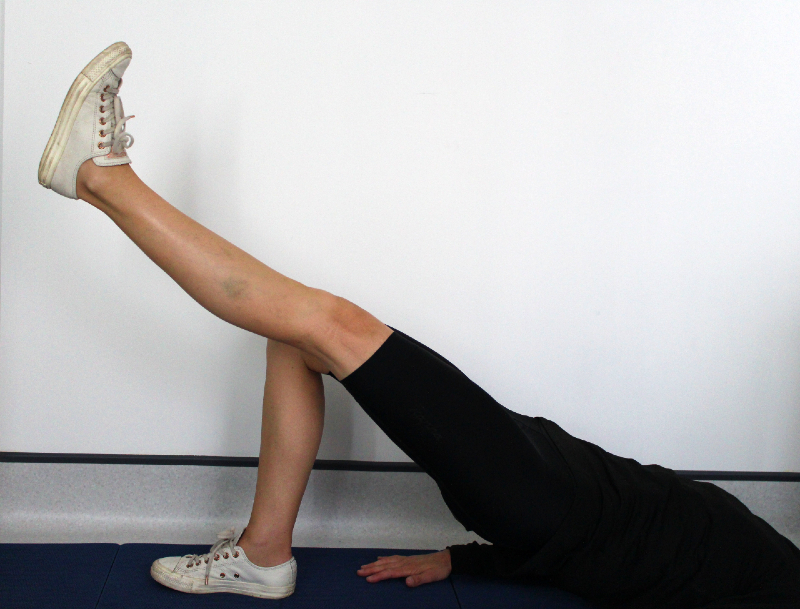
Starting in a double leg bridge position, lift one straight leg off the floor and move your body up and down on the supporting leg. Aim for 15 repetitions and two to three sets.
3. Strengthen your glutes, quadriceps and hamstrings by squatting and crab walking with a resistance band
Wall squats
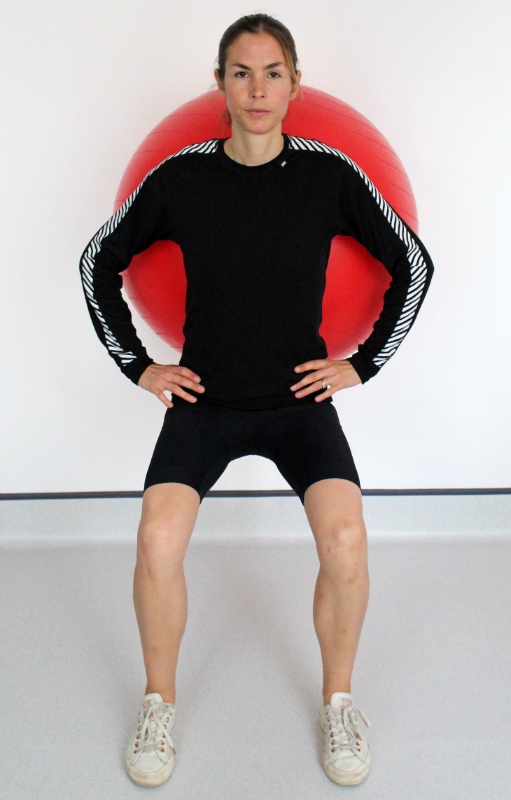
Standing with your feet just over hip-distance apart, lean back against a wall (or against a gym ball if you have one available) and bend your knees to perform a squat. Aim for 10 repetitions and two to three sets.
Crab walk with resistance band
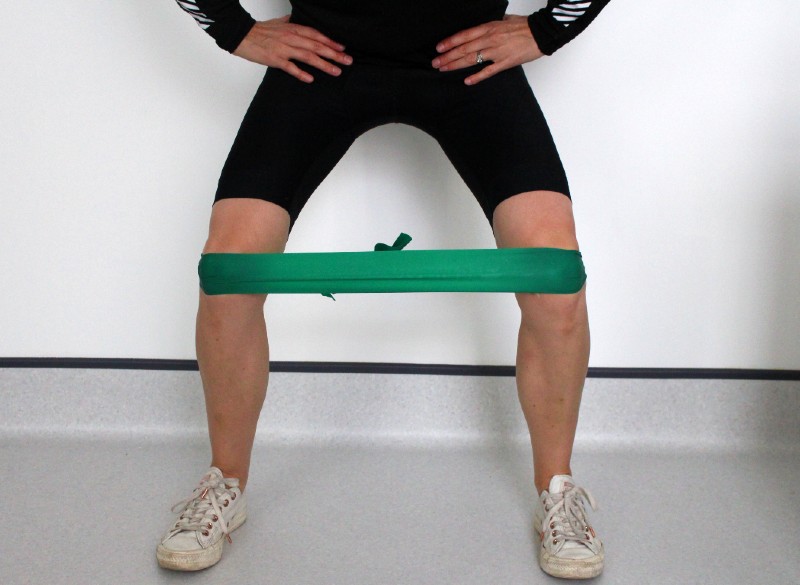
Place a resistance band around your knees and, while squatting down, side step in one direction until you reach the end of your available space. Then repeat side stepping in the opposite direction. Continue for around one minute and repeat two to three times.
4. Reduce tightness in quadriceps, hamstrings and calf muscles with stretches
The movement of the patella-femoral joint (PFJ or knee cap) is affected by tissues that attach to it. At the front and side of the knee are the quadriceps and Iliotibial band. Tightness in these structures can lead to increased pressure on the knees.
Furthermore, tightness in the hamstring and calf muscles can indirectly affect the PFJ by changing the way the knee moves during the swing and early landing phase of running. Stretching these muscles can help to reduce tightness and in turn prevent further injury.
For all stretches shown below, aim to hold each stretch for 20 - 30 seconds, and repeat three to four times.
There are two different components to your calf muscle, one which attaches above the knee and one below the knee.
- To stretch the longer component, known as your gastrocnemius, keep your knee straight and hold for 20 - 30 seconds.
- The shorter component, known as your soleus, can be stretched by flexing the knee slightly and holding for 20 - 30 seconds.
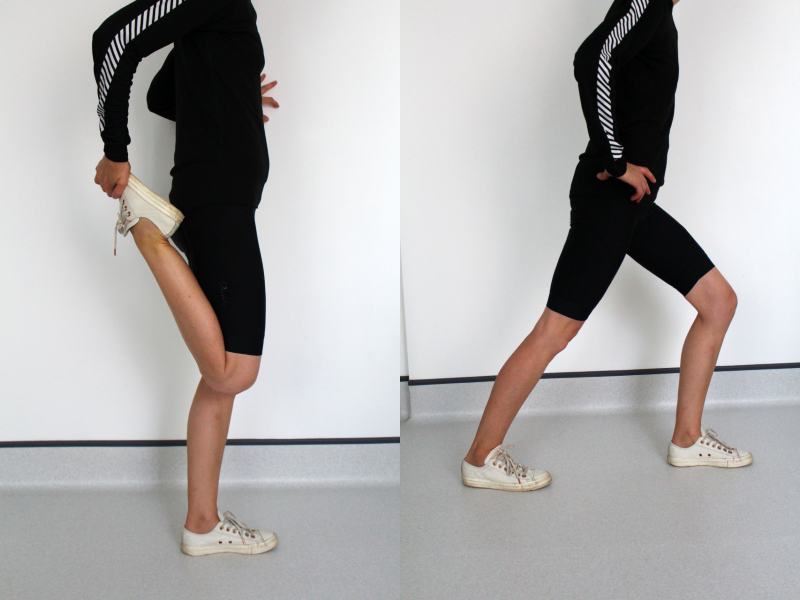
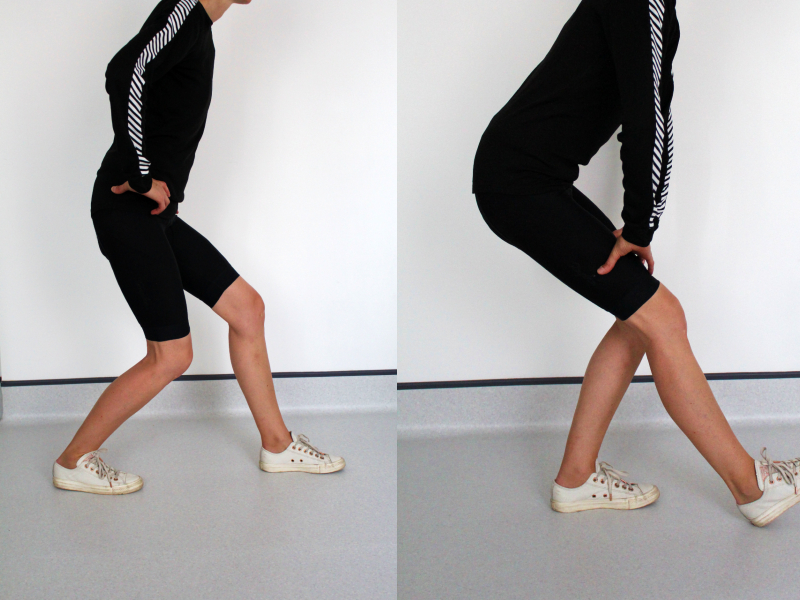
Other useful tips
If you find that pain from an injured knee has resolved while taking part in low impact activities such as walking and stair climbing, try returning to running by first:
- attempting shorter distances
- pacing your run with intervals of walking
- reducing your stride length by increasing the number of steps you take while running.
When returning to running after an injury, I’d also recommend monitoring your pain after a run by keeping a pain diary that records any pain felt and the length of time it persists.
Pain that resolves quickly after activity is acceptable, but if pain ‘flares up’ and the knee feels worse for more than a few hours you may need to stop running for a little while longer to avoid re-aggravating symptoms.
Further information
Have you started recently started running? Read Ruth’s tips on how runners can prevent injuries by identifying weaker muscles through a Movement Control Assessment.
If pain from runner’s knee hasn’t settled after a few days, then there might be something else going on that needs some further investigation. Contact our Physiotherapy department for a quick and easy online consultation.
Disclaimer
Any views expressed in this article are those of the featured specialist(s) and should not be considered to be the views or official policy of The London Clinic.